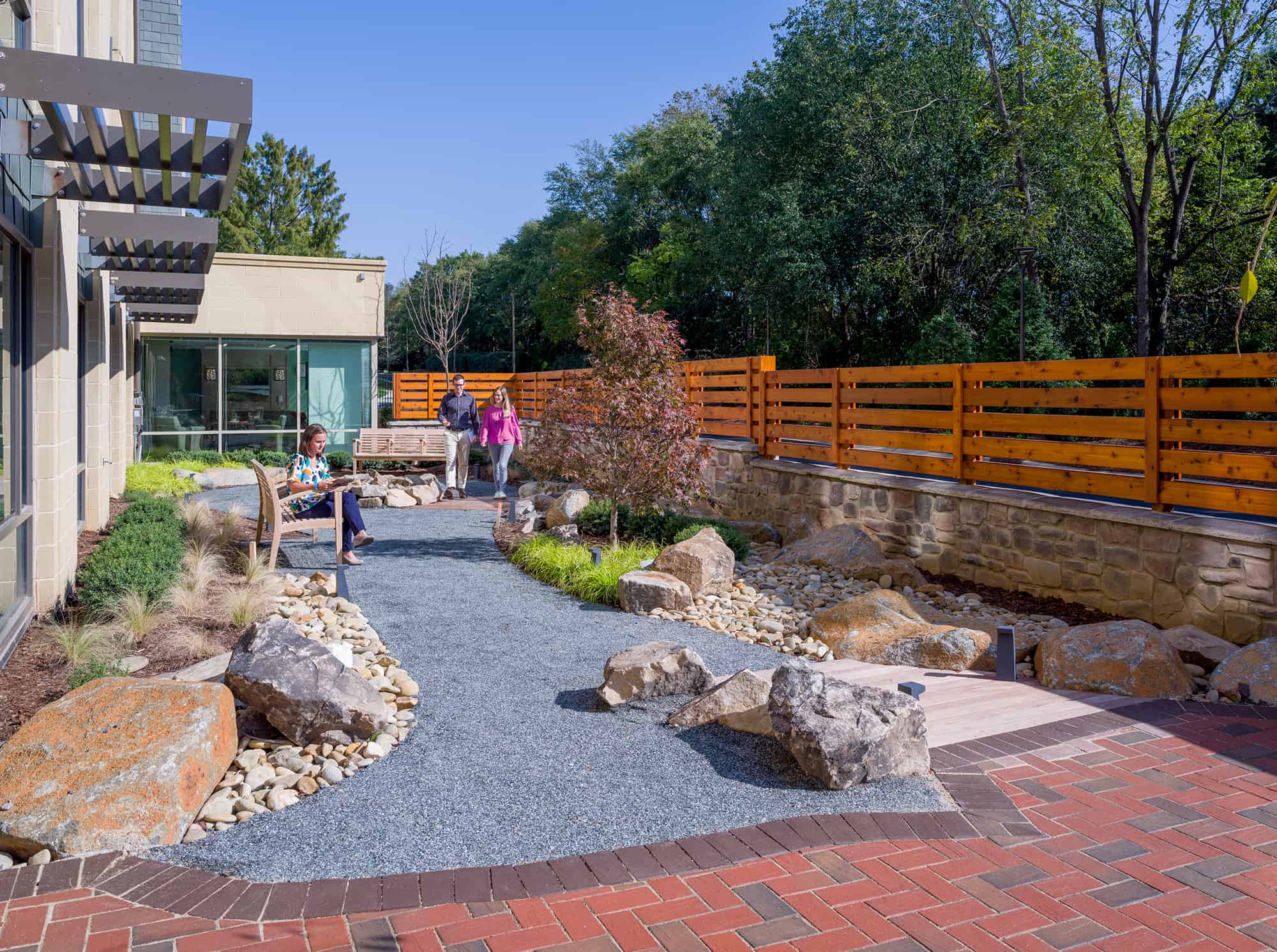In a perfect world, every project site is easy to develop. The reality is that project sites vary immensely between diverse climates and geographic locations. As we begin the design process and site analysis, our team considers how to provide the most sustainable outcomes possible for any given project.
See below how we influence our site designs to improve water quality, reduce energy consumption, improve the surrounding natural systems and provide a learning environment for all to enjoy. While each sustainability strategy may not suit every project, incorporating them into our design process yields meaningful impact.
Maintain existing vegetation and plant vegetation with a purpose
- Maintaining existing vegetated areas and their natural borders will support the health of the vegetation.
- Proper vegetation placement can be used to provide shade on the building, which keeps the building cooler and reduces energy costs.
- Trees can help block cool winter winds when planted as a windbreak perpendicular to the prevailing wind direction.
- Trees and larger groupings of vegetation help reduce soil erosion and improve water quality downstream by causing the water to slow and move through deeper layers of the soil.
Plant native and drought-tolerant species
- Planting native and drought-tolerant species reduces the need for irrigation since the plants can survive in a drier climate.
- Planting native species and creating plant communities reduces maintenance costs as well as the need to apply harmful chemicals to keep weeds and pests at bay.
- Reducing the amount of mowed lawn areas by planting perennial and grass seed mixes creates an environment for animals and pollinators to thrive while reducing mowing costs and providing educational opportunities for people to learn about their local ecosystem.
- Creating plant communities improves soil quality, reduces erosion and slows down the movement of stormwater.
Slow down the movement of stormwater
- Slowing down the movement of stormwater reduces the amount of sediment and chemicals in the runoff, reduces the water temperature coming from hot impervious areas, and reduces stream erosion to nearby streams and creeks.
- Using vegetated swales will slow down water, remove suspended solids and improve water quality.
- Creating decentralized stormwater treatment areas throughout the site reduces the need for underground pipes and reduces construction costs.
- Vegetated pervious areas like mulched groundcover and planted beds help reduce runoff volume by allowing stormwater to infiltrate into the ground.

